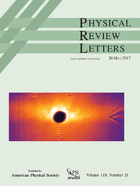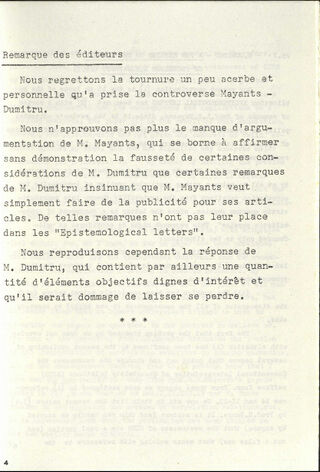Scientific Journals
«“rediscoveries” are not rare [...] and it would be desirable that journals and referees should do a better job in trying to avoid such a situation, not to mention the prevention of publication of misleading statements and/or wrong results.»
«He cites a paper, which I have been unable to obtain in Chapel Hill or at neighboring institutions.»
We publish essentially in the so-called "scientific literature", which is an unending flow of new results, with daily deliveries. This is the kind of things that is tougher to read than to write.
The correct abbreviation for a journal is ruled by the ISO 4. For instance, the "IEEE Transactions on Sonics and Ultrasonics" gets abbreviated to "IEEE Trans. Sonics Ultrason." [1] (that's the journal where was published the 1st experimental demonstration of X waves).
This is a list of important, interesting or where-we-publish journals:
Physical Review

Letter
To us, Physical Review Letters is the most significant Physics journal. It is not the most prestigious one in terms of impact factor, but this is due to the very high volume processed as compared to journals from the Nature family that are so restrictive as to be biased and biasing, as well as, ultimately, not even serving that well the coverage of the progress of science, which is better reflected in Phys. Rev. Lett. The journal is affectionately known as PRL.
- Editor's website
- Impact Factor throughout the years.
A
- Editor's website
- Impact Factor throughout the years.
B
- Editor's website
- Impact Factor throughout the years.
X
- Editor's website
- Impact Factor throughout the years.
Physics
Also known as "Physics Magazine", this aims at «spotlighting exceptional research», primarily on papers from the Physical Review journals. This is written either by peers, journalists or staff writers but for popularization of the technical results. Sometimes this comes at the price of accuracy.
Physics Physique физика
A short-lived journal with less than 100 articles in the period 1964-1968 which, however, did have time to publish Bell's EPR paper[2], who chose the journal because it was not covering publication fees but instead paying its authors. The uncommon name of the journal attracted the attention of Clauser who then thought about doing the experiment. [2]
Nature
Photonics
Physics
Materials
Science
Science Advances
- Editor's website
- Impact Factor throughout the years.
- on Google Scholar
Laser & Photonics Reviews

- Editor's website
- Impact Factor throughout the years.
Royal Society
Philosophical Transactions of the Royal Society A
The oldest scientific journal in the world, started 1665, which established the two key principles of scientific publishing: 1) scientific priority and 2) peer review.
«The Great God prosper You in the Noble Engagement of Dispersing the true Lustre of his Glorious Works, and the Happy Inventions of obliging Men all over the World, to the General Benefit of All Mankind.»—Dedicatory Epistle by Henry Oldenburg, secretary of the Royal Society.
In 1887, the journal split into two volumes: A for physical sciences and B for life sciences. We are naturally drawn to the A version. We published our overview of two-photon physics there.[3]
APL Quantum
APL focuses on the fast publication of significant fundamental results with an applied character. Its APL Quantum (APQ) is a recent addition (2024) in which we published our Photon liquefaction in time.[4]
New Journal of Physics
The open-access, online-only journal in all fields of Physics, published by the IOP. It comes with video abstracts if the authors are so inclined. It is from the DPG and charges a publication fee. It has a nice Focus On series.
- Editor's website
- Impact Factor throughout the years.
Optica
- Editor's website
- Impact Factor throughout the years.
Quantum Science & Technology
Optics Express
- Editor's website
- Impact Factor throughout the years.
Journal of Physics
B
- Editor's website.
- Impact Factor throughout the years.
Epistemological Letters
 The Epistemological Letters constitute an underground, sub-culture hand-typed and photocopied (at the time—1973 and 1984—mimeographed) publications on foundations of quantum mechanics, due to the reluctance of academic journals to publish articles on the topic. Much confrontation took place within the letters, showing how Science
is supposed to work, as opposed to how editors (such as S. Goudsmith) and authorities (such as N. Bohr) think it should. This was not without the occasional inflammatory letters
The Epistemological Letters constitute an underground, sub-culture hand-typed and photocopied (at the time—1973 and 1984—mimeographed) publications on foundations of quantum mechanics, due to the reluctance of academic journals to publish articles on the topic. Much confrontation took place within the letters, showing how Science
is supposed to work, as opposed to how editors (such as S. Goudsmith) and authorities (such as N. Bohr) think it should. This was not without the occasional inflammatory letters and as such the content can be regarded more as pre-Blog type of communication than a formal publication. Nevertheless, the Letters had a strong impact on the foundations of quantum mechanics.[5]
and as such the content can be regarded more as pre-Blog type of communication than a formal publication. Nevertheless, the Letters had a strong impact on the foundations of quantum mechanics.[5]
The University of Notre Dame—thanks to Sebastián Murgueitio Ramírez's dedication and discernment [3]—retrieved and archived the complete material, and is supposed to provide archives of the "Epistemological Letters" here but the links appear broken. They have to be found, interestingly, "clandestinely".
The Information Philosopher provides an online index of the Epistemological Letters which we reproduce locally for fear it'll go broken (as the Letters themselves) in our more detailed page on the Epistemological Letters.
The American Journal of Physics
This is great material: a Physics journal that is not at a Research level, so free of the conventions and terseness required for such a format. It even started as the "American Physics Teacher" (changed to its current name in February (1940)). However, since Physics is intrinsically a Research topic, the content typically covers original issues. It is probably not a coincidence that an editor of the journal was Edwin F. Taylor, a great popularizer of science, especially when he teamed with Wheeler.
One of the best resources of AJP is their resource letters, whose list is compiled there: AJP Resources Letters.
Europhysics Letter
- Impact Factor throughout the years.
Journal of Nanophotonics
- Eidtor's website
- Impact Factor throughout the years.
Journal of Mathematical Physics
- Editor's website
- Impact Factor throughout the years.
Semiconductors Science & Technology
- Editor's website
- Impact Factor throughout the years.
Physica Status Solidi
A
- Editor's website
- Impact Factor throughout the years.
Physics Letters
A
- Editor's website
- Impact Factor throughout the years.
Solid State Communications
- Impact Factor throughout the years.
Superlattices and Microstructures
- Editor's website.
- Impact Factor throughout the years.
Quantum Information & Computation
This is a rather obscure journal from an even more obscure editing company, whose content is listed (but not directly available) here. It appears to have a lot of very interesting (possibly important) texts. They are, however, difficult of access!
ArXiv
Last but not least, the arXiv.
References
- ↑ Quantum-mechanics debate. L. E. Ballentine, P. Pearle, E. H. Walker, M. Sachs, T. Koga, J. Gerver and B. DeWitt in Physics Today 24:36 (1971).
- ↑ On the Einstein Podolsky Rosen paradox. J. S. Bell in Phys. Phys. Fiz. 1:195 (1964).
- ↑ Two photons everywhere. E. Zubizarreta Casalengua, F. P. Laussy and E. del Valle in Phil. Trans. R. Soc. A 382:20230315 (2024).

- ↑ Photon liquefaction in time. E. Zubizarreta Casalengua, E. del Valle and F. P. Laussy in APL Quant. 1:026117 (2024).

- ↑ On how Epistemological Letters changed the Foundations of Quantum Mechanics. S. Murgueitio Ramírez in 🕮The Oxford Handbook of the History of Quantum Interpretations. O. Freire Jr., G. Bacciagaluppi, O. Darrigol, T. Hartz, C. Joas, A. Kojevnikov, O. Pessoa Jr (Eds.) Oxford University Press, 2022. [ISBN: 978-0198844495].
